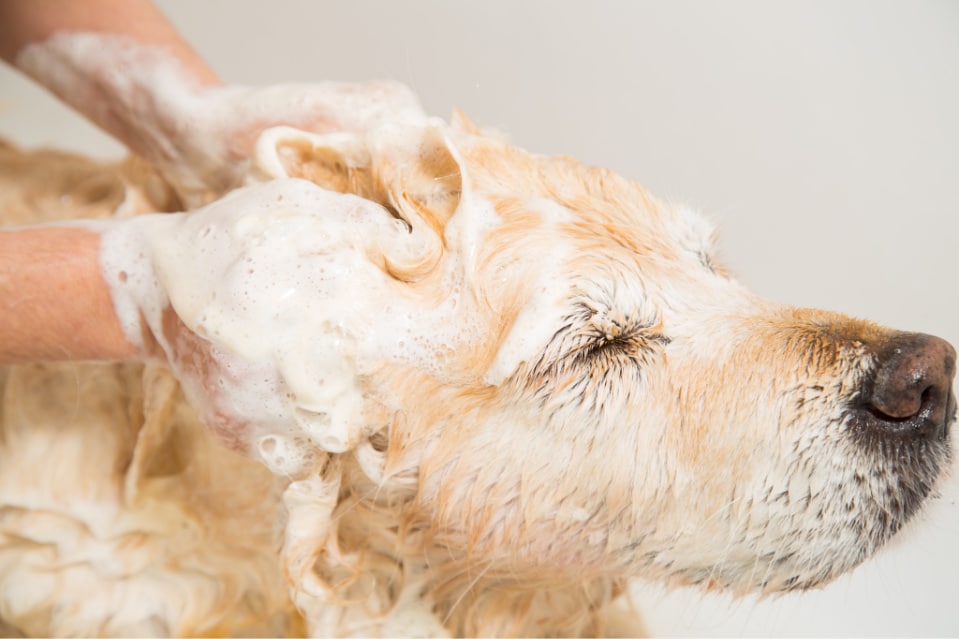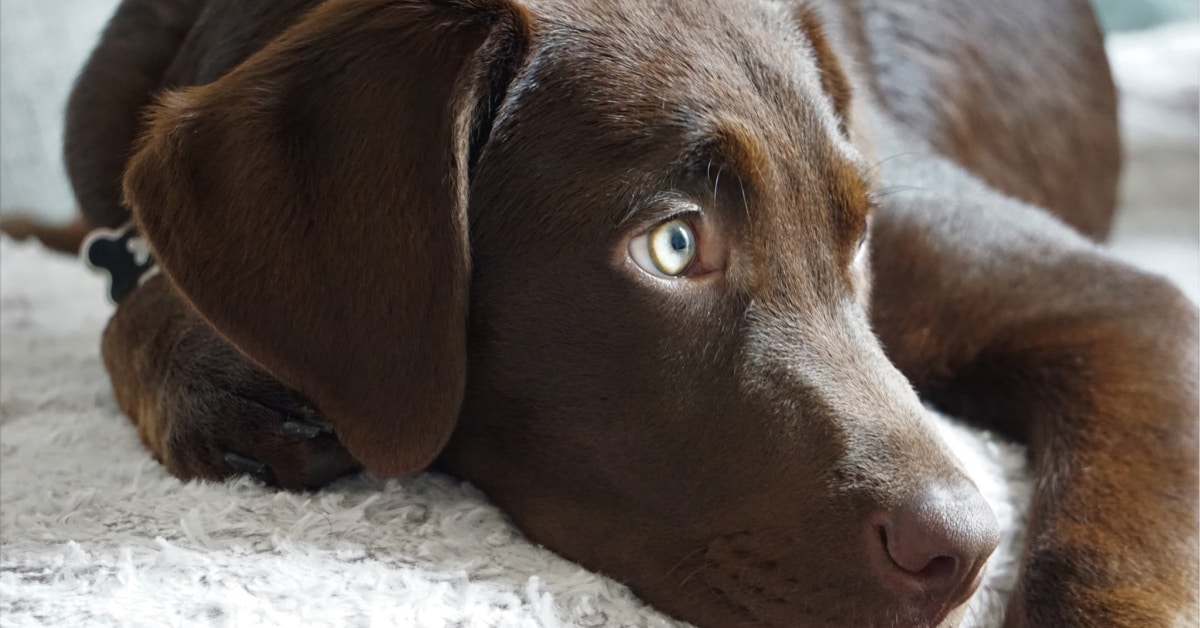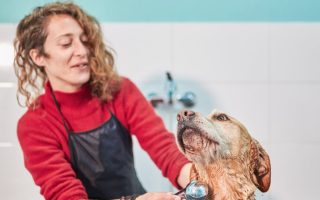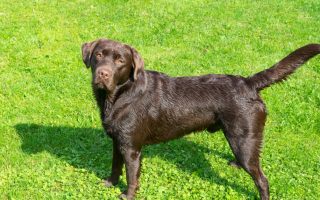Labrador shedding tips are a boon to most Labrador Retriever owners, especially during Lab shedding season in spring and autumn when Lab shedding can be a very frustrating occurrence.
This, despite the fact that most pet owners initially choose to get a Labrador Retriever home due to the belief that with them being a short-haired breed, their coats are easy to manage.
However, one thing that they don’t know is that Labrador Retrievers shed a lot. In fact, it can be intimidating at first to deal with Labrador shedding. This is especially true when you are a first-time puppy owner, and you’re not sure what to do.
For this reason, we have collected some Labrador shedding tips to help keep you and your pet happy.
If you are armed with the right information and the proper mindset. You should be able to get through Labrador shedding season just fine.
What makes a Lab coat so special?
Before tackling different strategies to help with shedding problems, let’s talk a bit about the Labrador Retriever coat.
What makes a Labrador coat so special? What makes Labs shed a lot?
In our previous post, we have mentioned that one of the trademark characteristics of a Labrador is its coat. The breed has a specialized double coat that ideally helps them cope under extreme temperature conditions.
This aspect previously applied to their fishing dog ancestors, but they managed to retain the coat up until today.
The double coat is made up of the undercoat and the outer coat. While the outer coat is dense and firm to the touch. The undercoat is a bit lighter than its outer counterpart.
Nonetheless, both of the coats have their own purposes and serve the Lab breed in their own unique ways.
The outer layer is a waterproof coat that shields the Lab from the cold. This is one of the remnants of their ancestors’ days as fishing dogs. And up until today, Labrador Retrievers love to swim and play in the water.
The inner coat is more of an insulating material. It helps a Labrador stay warm when subjected to cold and stay cool whenever it is hot.
The inner layer also helps repel water because of certain natural oils that are found in the coat.
Will my Lab puppy shed a lot when it is time to grow into their adult coat?
The short and simple answer to this question is yes. When this time comes, you will have to up your ante as a dog owner and practice reining in those coat furs.
It will be challenging in the beginning, especially if you have no prior experience.
But, if one is dedicated enough, you should be able to manage with the changing of coats just fine.
Another highlight of the Labrador’s coat is when it sheds from its puppy coat into the adult one.
This usually happens when your Labrador Retriever turns 4-5 months old. In less than 4 weeks, they will already be in their adult coat and will shed intermittently for the next years of their life.
Why do Labs shed their coats?
A big part of the bountiful shedding is because of the Labrador’s special double coat.
They have to switch it up every so often because of the changing Labrador shedding seasons.
Thus, when spring and winter roll around, you will start to notice some heavy Labrador dog shedding.
A Labrador shedding tips excessively may be possible because, although their outer coat is short. The entirety of a Labrador’s coat is much more than that.
They will shed a lot in shedding seasons lasting about 3 or so weeks. So that is definitely something that you should prepare yourself in advance for.
The cycle of Labrador shedding
Of course, extreme Labrador shedding does not happen all year long. The most shedding you will see happens during spring (when your Lab gets rid of their bulky winter coat) and during autumn (when they will begin to prepare for the cold of winter).
Each of these periods can be referred to as molting or shedding season. These usually last about three weeks at each time but may last longer or shorter depending on your Labrador.
Other than those two seasons a year where your Lab will shed a lot, they will usually shed a regular amount of fur. Take note that even if not during shedding season, Labradors will still shed, and you will still need to maintain their coat properly through grooming.
Easy tips to remember for Labrador shedding
Below are a handful of tips to help you walk through Lab dog shedding with relative ease.
Lab shedding tip #1: Learn to groom your Labrador properly.

The answer to dealing with a Labrador shedding excessively at certain times of the year is catching it before they fall all over your house and furniture.
You’d have to groom your Lab every other day or so (if you can) during those few weeks when they are shedding.
For the rest of the year, you can safely get away with brushing them about twice per week, or as many times as you see fit.
Brushing their coats regularly will help catch and get rid of any loose hairs that would have landed in your home if you did not get it in time.
With proper grooming, you will be able to get your Lab puppy through its first shedding when they grow into their adult Labrador coat.
Lab shedding tip #2: Get the proper cleaning tools.
One way that you can gear yourself up for Lab shedding season is investing in the right cleaning tools.
Look for vacuums and other cleaning paraphernalia that you can use in Labrador Retriever shedding situations.
Getting the right ones is paramount because cleanup is inevitable. You will not be able to get all of your Lab’s fur just by brushing their coat.
Eventually, a lot of the hair will still end up on your couch, carpet, or wherever else your Labrador treads.
The right cleaning tools can range from special pet hair vacuums to using the standard pair of dishwashing gloves.
You can get creative with your methods as long as they are effective in getting you the results you want.
Lab shedding tip #3: Rethink your furniture.
A major overhaul that you can do is to try to get things for your home that will make Lab shedding less obvious.
Of course, don’t do this if your things are new, as that would only be a waste of effort and resources.
But if it is time for a change anyway, try to look into ways you can customize your home to make Lab fur less visible.
For example, you can try and get a rug that resembles your Lab’s coat color. Or, you could get an ottoman that looks like your Lab’s black coat.
Lab shedding tip #4: Grooming tools are your friend.
Additionally, there are tons of grooming tools in the market that can help you with your shedding woes.
Getting tools for grooming is one of the best ways you can approach the topic of Labrador shedding. If you cannot find one near you, just scrounge online.
Lab shedding tips #5: Make grooming a fun experience for your Lab.
Grooming may not be such a great experience for your Labrador. Depending on what they like and what they are used to, it can be tough to make grooming an enjoyable experience for them.
There is even a study that tried to see if grooming distresses dogs.
While the results were inconclusive, most of the dogs didn’t seem happy before the actual grooming, so the looming thought of groom time may have affected their perceptions.
Just like you would any other activity you want your dog to repeat, such as following cues and more, you can give them rewards for their good behavior.
All in all
There are plenty of amazing reasons why the Labrador Retrievers breed is one of America’s favorites.
Nevertheless, living with a Labrador can be overwhelming, especially if you are not prepared for quirks and characteristics such as excessive Lab shedding.
While Labrador dog shedding can be a headache, there are some solutions and tips that can have a meaningful impact on your Lab’s shedding habits.
Try to figure out which Lab shedding tips work best for you and your dog by reading the pieces of advice we have mentioned above.
For more professional recommendations, we also suggest consulting your vet or other experts.







